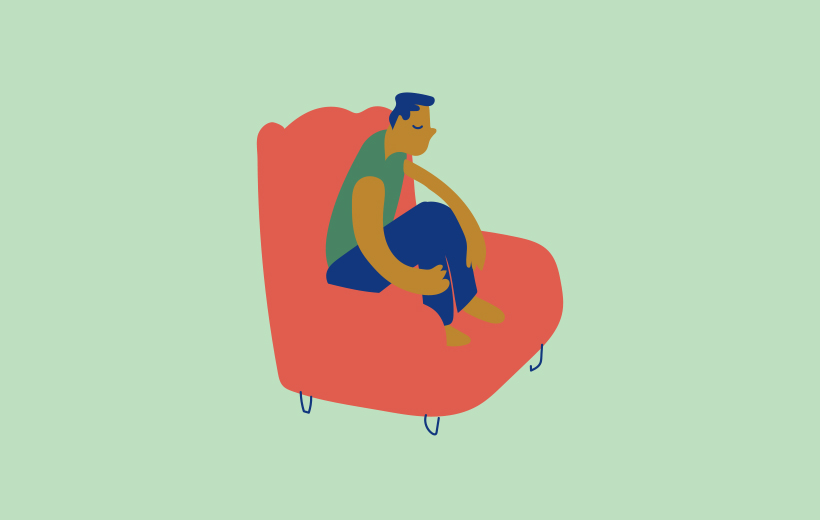GUEST EDITORIAL
How Do You Breathe?
By Yeshe Palmo • 3 min read

Breath is absolutely amazing. Breath is always with us, from the moment we’re born to the moment we die. It costs nothing. Breath tells us so much about our energy. If our energy is all over the place, our breathing will be too. If our mind is at ease, the breath is at ease.
We usually just think about breathing in and breathing out, yet there are four parts to a breath cycle. The four parts affect the nervous system in different ways. When we inhale, it’s like spring; it’s what we are inviting in! And when we’re at the top of the inhale, that’s summer — we’re at our power and strength. It’s there fully. After summer comes autumn. This is the exhale, which is about letting go, releasing, detoxifying, like the autumn shedding. And at the end of the exhale, we arrive at winter: clear and empty.
What effect are we looking for when we breathe? If we want to release tension or rumination, we emphasize the exhalation and the gap at the end before the inhalation. If we want to energize, we emphasize the inhale, and the place at the top of the inhale.
In Mingyur Rinpoche’s January 2024 teaching video, he instructs us to breathe slowly and gently. We all have different speeds, so remember to do what is slow and gentle for you. He is working with the left and right nostrils alternatively, balancing our energetic body. When we breathe only through the right nostril, we are charging our system (sympathetic), and when we breathe through the left nostril, we relax the nervous system (parasympathetic). After counting our breaths, Rinpoche asks us to relax — inhale and exhale at our natural pace — and notice our sensations. Simply by noticing, mind and body are synchronizing. In doing this balancing practice, we will become energized and awake!
The breath is linked to the nervous system and subtle body. The patterns of how we breathe are developed when we are very young and are unique to each of us. We can understand our unique breathing pattern by checking with our hands placed on the center of our chest and the belly. We can then explore our breathing cycle to see if we are breathing merely in our chest or belly. If there is hardly any expansion, we can try breathing so that there’s some movement in our chest and belly. To breathe properly doesn’t mean we force the breath; we keep it gentle. It means there’s movement in the chest and the belly.
There are some safety measures to keep in mind. If you feel odd, do stop. The breathwork can affect the nervous system, and the effects may not be noticeable until a few hours later. Safety means taking care of ourselves. If our body tells us something is not quite right, believe it.
Yeshe Palmo, a therapeutic counselor since 2007 and yoga teacher, received three years of specialized training with breath and movement specialist Betsy Polatin. Palmo has a master’s in meditation and yoga traditions, and her academic research focused on the efficacy of yoga in preparing Westerners for long retreats. Palmo was a nun for 17 years and has done extensive retreat. She is a long-time student of Thrangu Rinpoche, Khenpo Tsultrim, Ringu Tulku, and Mingyur Rinpoche and currently resides in England. In recent years, she has volunteered much time to Tergar’s development of its Awareness Yoga practice.
Learn meditation under the skillful guidance of world-renowned teacher Yongey Mingyur Rinpoche at your own pace.


In my tradition, we believe that with any type of relationship — between friends, family, teacher and student, or even the relationship between yourself and the society you live in — there are four points that need to be considered, sometimes called “the four enlightened activities.” These consist of peaceful…

How much influence do you have over the state of your mind? In all likelihood, you feel you have next to none. You don’t wish to get angry, but you get angry. You have zero desire to get depressed or tense or sad, but all of that happens anyway.

If we’re coping with a heavy, complicated problem, we’re often too busy to feel lonely. But sometimes, loneliness itself becomes our major problem. What’s happening is that our monkey mind is zooming in on the feeling, exaggerating it. Sometimes we think, “I don’t really have any good friends,” when what…
If you enjoyed reading our articles, please join our mailing list and we’ll send you our news and latest pieces.
